Nowy Sącz 14-09-2024
Nowy Sącz Railway Station. 2024
Geographic coordinates: 49.605N 20.704E. Elevation 308 m. Address; Ulica Kolejowa 15, 33-300 Nowy Sącz. Poland, Lesser Poland Voivodeship. According to the PKP classification, the station has the category of a regional station.
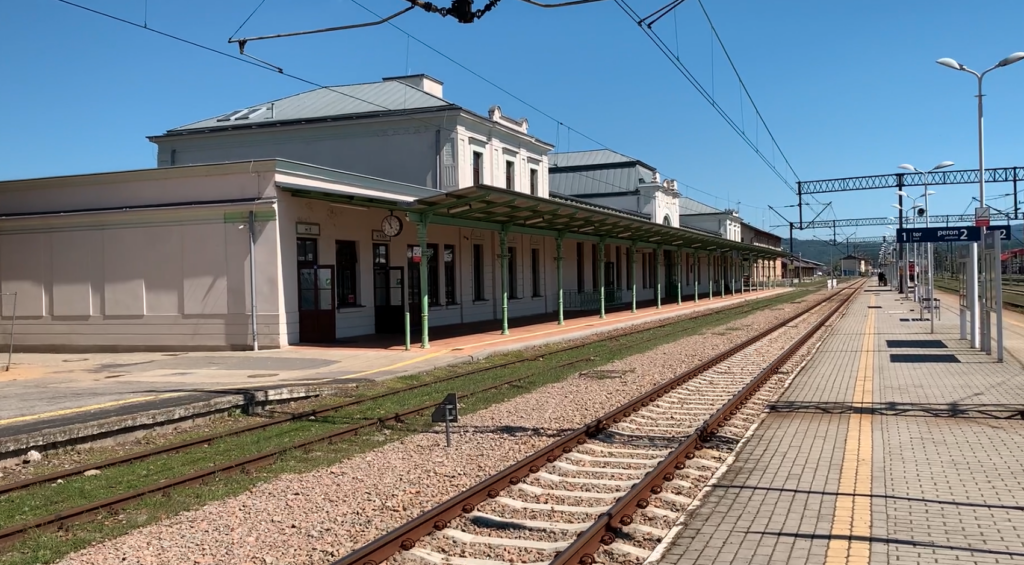
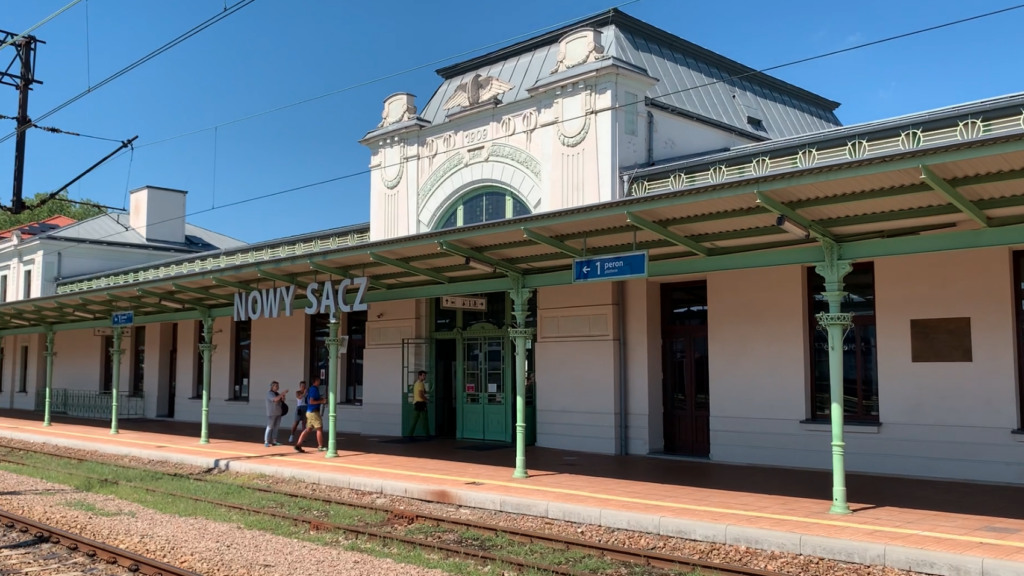
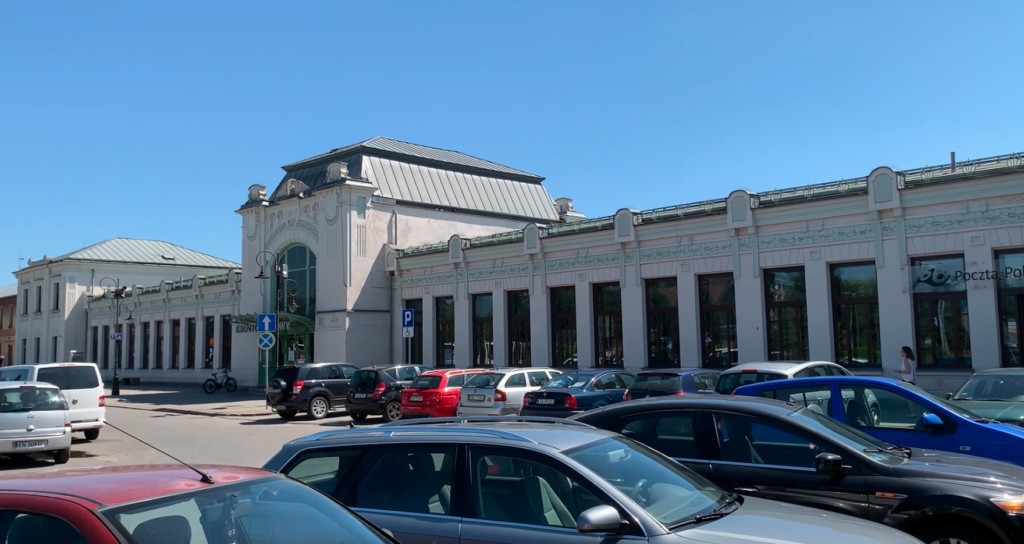
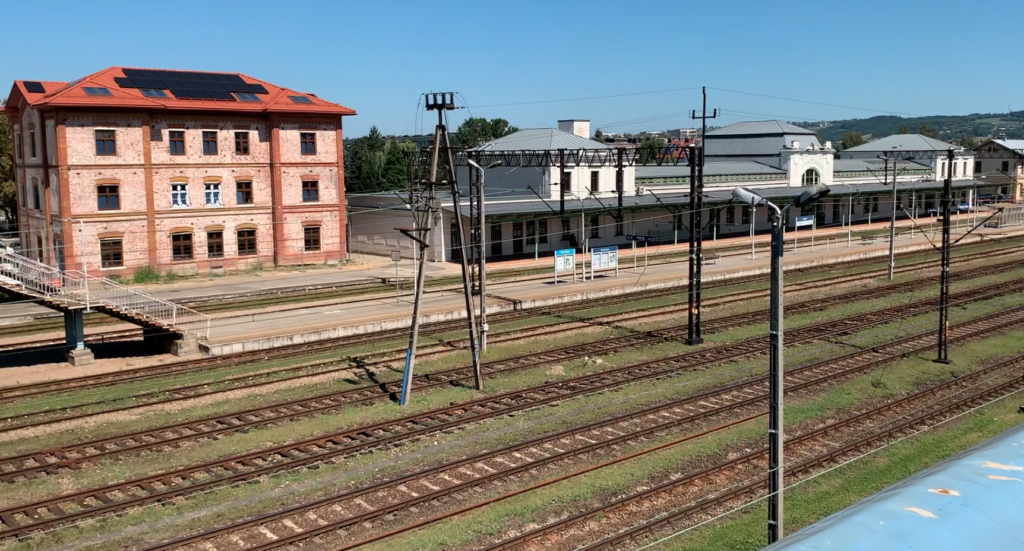
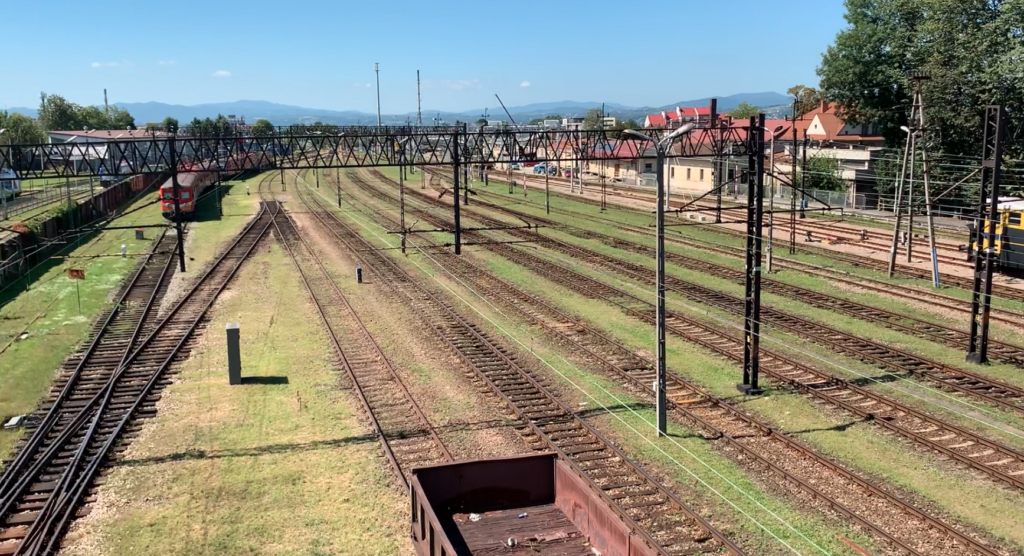
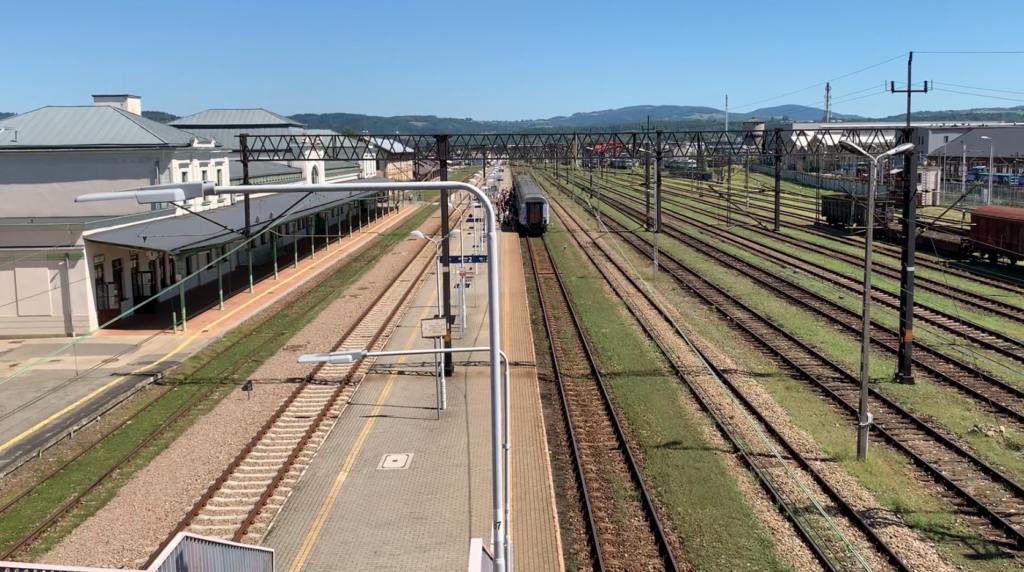
In September 2024, 34 passenger trains departed from Nowy Sącz station during the day. You could go to: Bobowa, Gdynia Główna, Kraków Główny, Krynica Zdrój, Muszyna, Piwniczna, Tarnów. In 2015, the station served up to 900 passengers per day. In 2023, the station served up to 1,500 passengers per day.
The Tarnów – Leluchów railway line was electrified in 1986. At that time, the first electric train entered the Nowy Sącz station. A commemorative plaque commemorates this fact.
The history of the Nowy Sącz railway station.
The first Tarnów – Leluchów railway line ran through Nowy Sącz in 1876. In 1883, a connection was built with Chabówka and the station became a railway junction. It remains so to this day.
The Nowy Sącz station was and is a window to the world for the Sądecki Beskids. At the turn of the 19th and 20th centuries, the railway was the means of transport that enabled the emigration of people across the Great Pond. Emigrants traveled by train to Kraków, where they changed to trains to Mysłowice. In Mysłowice, they boarded Germanic trains and continued their journey to seaports. Usually to Hamburg. Here, there was an initial selection of the population conducted by US administration agencies. Then there was a sea voyage lasting several days. For the poorest people, below deck in the holds.
On September 1, 1939, the station was damaged as a result of Germanic bombing. During the German occupation, the station and the rolling stock repair plant worked for war needs. Trains with Polish prisoners of war departed from the Nowy Sącz station to German concentration camps. The fate of the Sącz Polish patriots is commemorated by a plaque located in the station hall. On January 15, 1945, the Soviets carried out an assault attack with 14 Il-2 aircraft from the 525th Assault Aviation Regiment. The German losses were small, but they led to the retreat of the Germans. On January 16, 1945, Soviet troops entered the city.
At the beginning of Stefan Batory Avenue, in December 2009, a full-length monument “Sądecki Kolejarz” was erected, authored by local artist Mr. Adam Janczy. The monument depicts a railway worker going to work, holding a suitcase in his hand.
On the station square stands a monument to technology; Steam locomotive TKt48-177.
Railway station in Nowy Sącz.
The first station building was put into use in 1876. This was a time when the Republic of Poland was under partition. The Kraków region was in the Austro-Hungarian partition and was called Galicia. At that time, Nowy Sącz was called Neu Sandez (1876-1918). This Germanic name Neu Sandez also appeared during the Second World War (1939-1945). The proper name is Nowy Sącz, because Poles have always lived and worked here.
The first station building was built according to standard plans that were developed in Vienna. The designs of railway stations were accepted by the Vienna Railway Directorate, and their form depended on the rank of the city, the railway junction and the wealth of the local community. Similar stations were built in other cities. The building was built on the plan of an elongated rectangle. The building was two-storey with two ground-floor wings, in which the attic was developed. The central part had six axles, and the side wings had four axles each. The whole was covered with a double-pitched roof, with a medium slope. The whole was built of brick and was plastered. On the side of the station level, a roof was built along the length of the entire building.
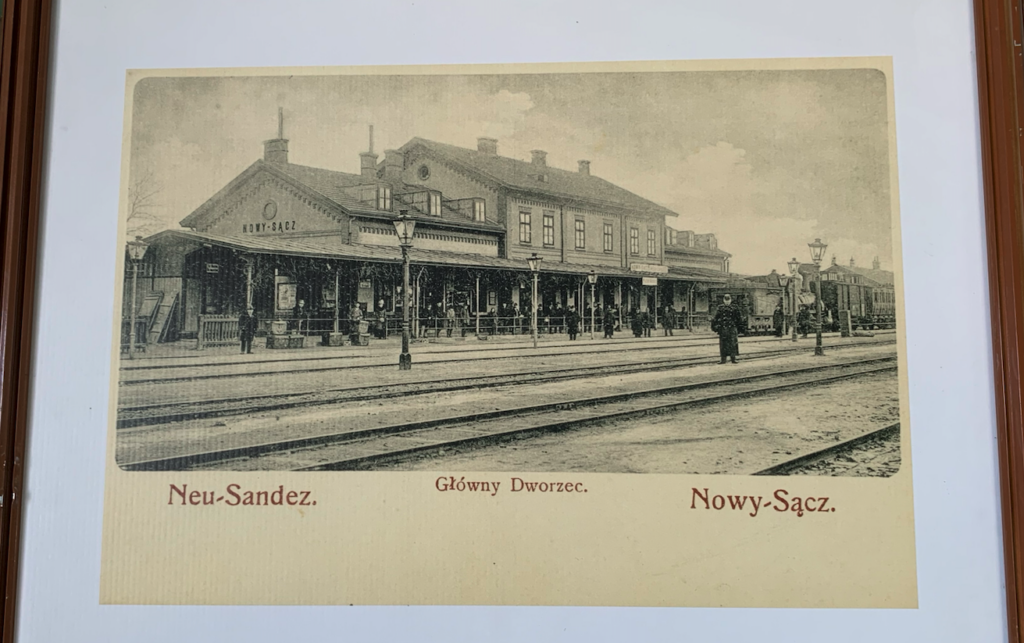
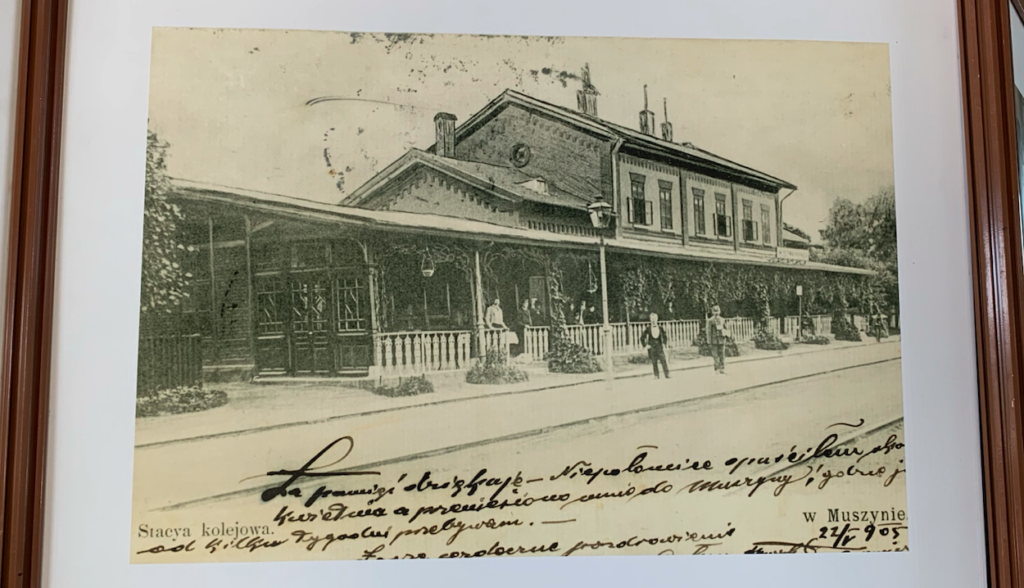
In the period 1908-1909, the station was rebuilt. In 1904, the City Council bought another plot of land for the reconstruction of the station. The Minister of the Treasury in Vienna, Mr. Leon Biliński, provided significant assistance. The new station was designed in the Art Nouveau style, on the plan of an even more elongated rectangle. The area of the station was 3,700 square meters. The building is symmetrical and consists of five parts. The central part is the main hall of the station, high and covered with a mansard roof, covered with sheet metal. The hall received large representative windows. Currently, the interior of the main hall contains mountain landscapes by the artist and railwayman Edmund Ciećkiewicz, a student of Jacek Malczewski. The front elevation of the station is decorated with stucco. The middle parts are single-storey and have numerous entrances leading to the interior. These parts are covered with a gable roof, with a small slope. The external parts are two-storey with three axes and are covered with a hipped roof with a slight slope. A canopy supported by decorative cast iron pillars was left on the platform side.
In the period 1977-1983, the station was modernised to adapt it to the needs of the time. The walls were demolished, making a new division of the internal space. A mezzanine was built, where a waiting room was located. The number of ticket offices was increased. The interior was lined with granite from Strzegom, marble from Morawica and syenites from Kośmin. The interior was lit with modern fluorescent lamps. The renovation was forced by a storm that damaged the roof of the main hall in 1977. On 19 December 1991, the station was entered into the register of historical monuments under No. A-653.
In September 2013, another renovation of the station building began. During the renovation of the station, the roof coverings and joinery were replaced and a new elevation was made. The rich stucco was restored on the external walls. The date 1909 was restored on the side of the platforms. The floor was renovated. The facility was adapted to the needs of disabled people. The building has ticket offices, a waiting room, and the Polish Post Office. The station is accessible to the disabled. There is a tactile map of the entire station for the blind. On December 18, 2014, the station was officially opened.
A brick, three-story building is associated with the station building, which housed the post office and railway offices. Initially, it was supposed to be a residential building. Currently, in 2024, the building is undergoing a general renovation. The roof, installations, joinery, and other elements have been completely replaced. Photovoltaic panels have been installed on the roof. In 1896, a park with benches and trees was established next to the station for residents and travellers to rest.
Infrastructure of Nowy Sącz station.
There are two platforms in operation at Nowy Sącz station. Single-edge platform 1 is located at the station building. This platform is 270 m long and mainly serves trains in the direction of Chabówka. Platform 2 is an island platform and has two platform edges. This platform is 370 m long and has four bus shelters. The platform has benches, waste bins, audio railway information for passengers and display cases, and lighting. The platform surface is paved and has a yellow warning line. Access to this platform is via a footbridge over the tracks and at the track level, at the eastern wing of the station. The footbridge is located on the western side of the station building. It allows passengers to reach Platform 2 and employees to the NEWAG plant.
Nowy Sącz railway station is located on two railway lines; LK No. 96 Tarnów – Leluchów. LK Nr 104 Chabówka – Nowy Sącz. The station has 2 main tracks and 10 additional tracks. In addition, there are connections with tracks belonging to NEWAG and the locomotive shed.
The locomotive shed was built around 1905. It is located in the eastern part of the station and has a fan-shaped structure with 18 stands. Various steam locomotives and diesel locomotives were serviced in the locomotive shed. The most common were SM42 and SP42 locomotives. In addition to the fan-shaped locomotive shed, there is also a rectangular locomotive shed with two stands. A water tower was built on the eastern side of the fan-shaped locomotive shed.
Most of the buildings on the south-eastern side of the station belonged to the railway workshops, and currently belong to the NEWAG company. To the east of the station building there are warehouses, which are currently used by small commercial and service companies. There are tracks by the warehouses, but they are not used. In the eastern head of the station there is a viaduct over Nawojowska Street. Further east is the Southern Plant of PKP Energetyka SA. The plant has its own hall for railway vehicles. In the western head of the station there is a viaduct over Kolejowa Street, as well as a rail-road crossing along Kolejowa Street and LK No. 104. To the north-west there is an old housing estate built with railway workshop employees in mind, called Stara Kolonia.
NEWAG.
NEWAG is a railway company operating in Nowy Sącz since 1876. Initially, these were repair workshops. Currently, it is a joint-stock company, listed on the Warsaw Stock Exchange. The share capital amounts to PLN 11,250,000. The company’s address is ul. Stanisława Wyspiańskiego 3, 33-300 Nowy Sącz.
Currently, NEWAG specializes in the production and modernization of rolling stock, both diesel and electric, and passenger cars. NEWAG’s hit is hybrid trains. The company also operates in the tram transport market and the construction of metro trains. In addition to the plant in Nowy Sącz, the company has a plant in Gliwice, as the Branch Department of Electric Locomotive Production. Vehicles manufactured by NEWAG are used in Poland and Italy. More on this topic is in a separate chapter; ZNTK Nowy Sącz then NEWAG Nowy Sącz. 2024.
Written by Karol Placha Hetman
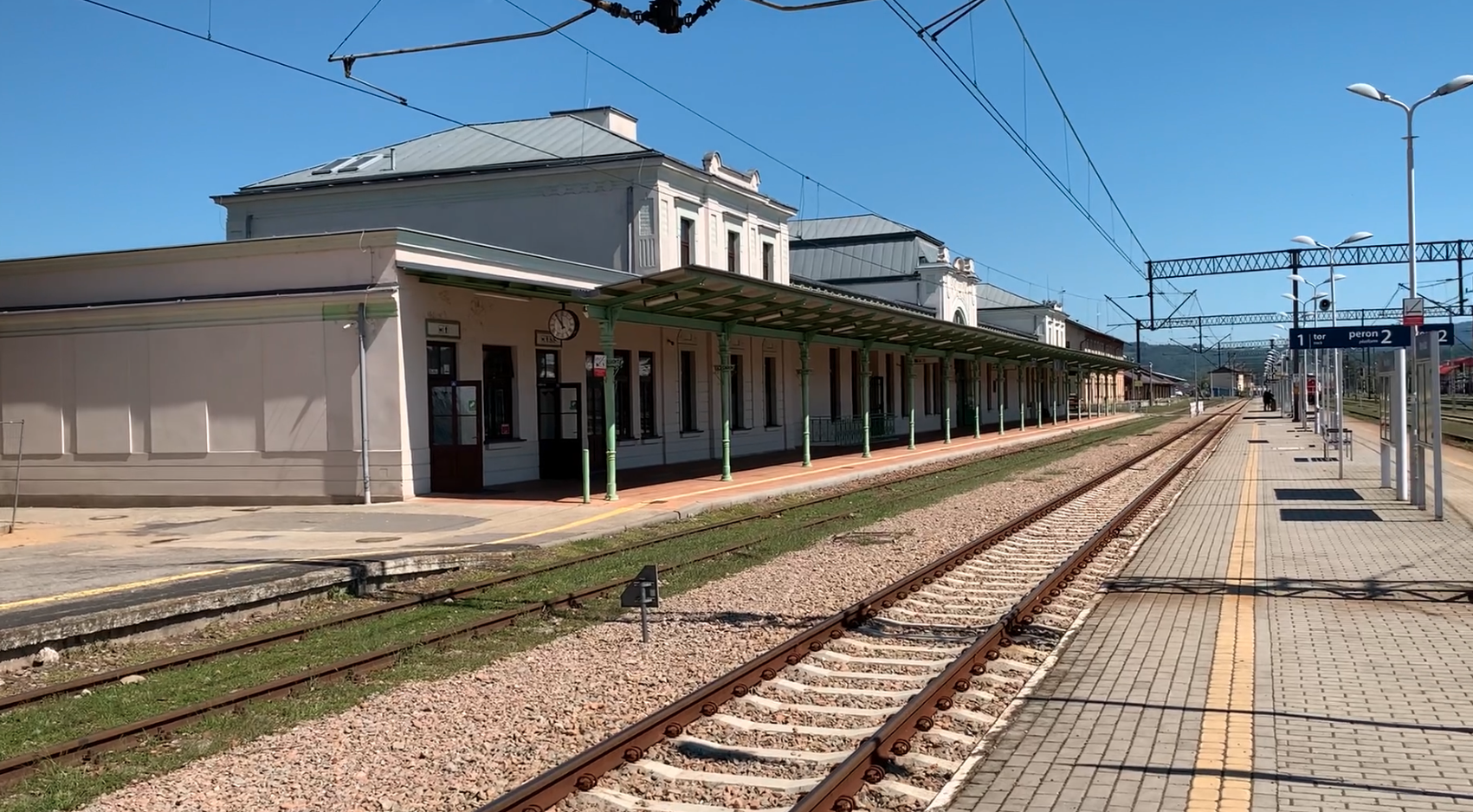
Leave a Reply
You must be logged in to post a comment.